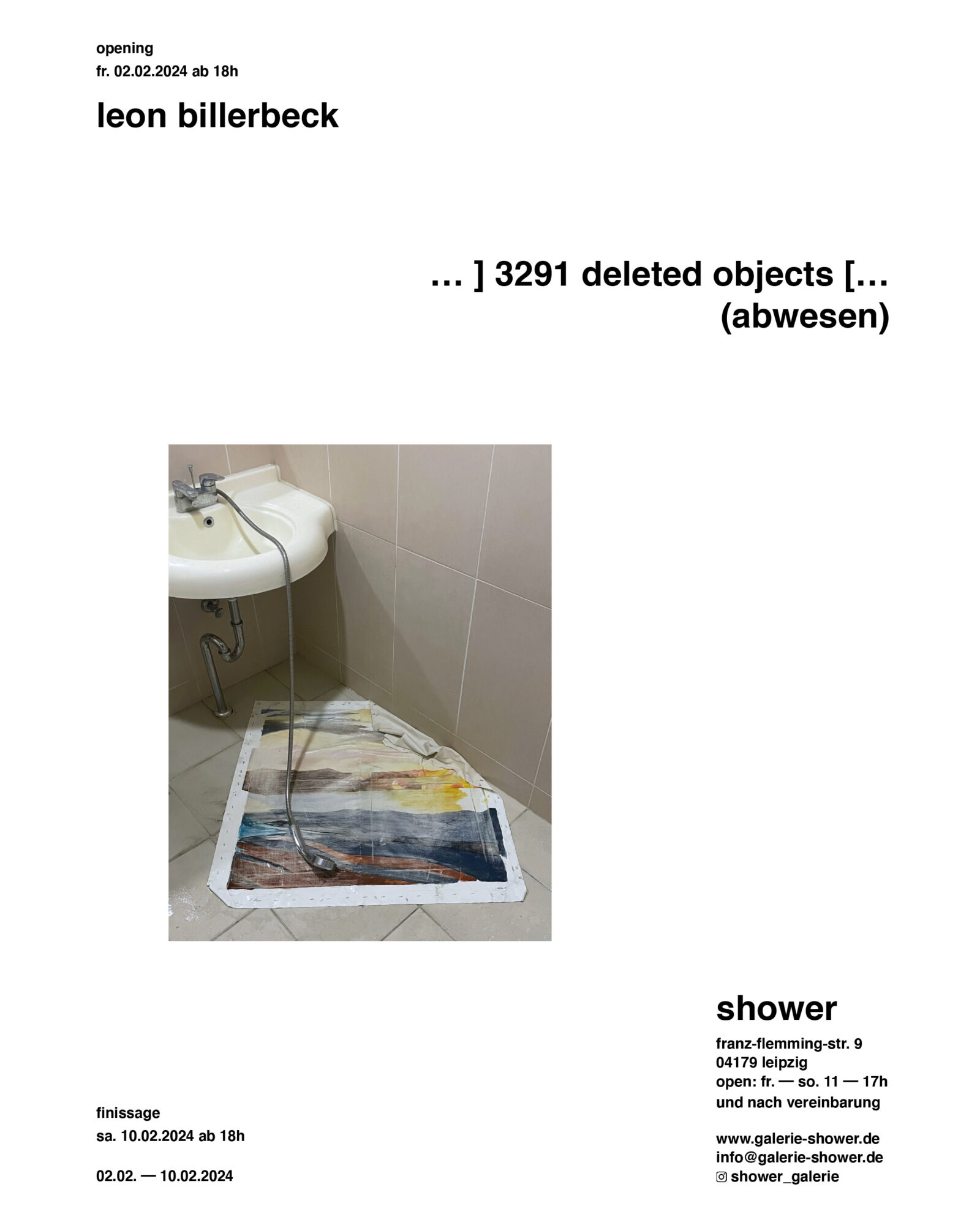… ] 3291 deleted objects [… (abwesen)
2.2.24–10.2.24
In times when the mass production and consumption of content and products seems to have reached its peak, the important question arises as to whether anything can be added to the world at all. The accumula-tion, increase and optimisation of things simulates a security for (post-) modern society that it is no longer able to find within itself. However, it destabilises itself in the constant competition for attention, originality and performance. This nature of the world provokes a constant need to assert oneself, a space-consuming presence of things and people that oversaturates the available space and separates oneself from the environment.
Byung-Chul Han criticises this beingness as the substance of the Western-modern world in his essay Abwesen. While Western thought is dominated by the notion of a striving being, the self, which is opposed to the world, East Asian philosophy is rather centred around the self-forgetfulness of the ego in nothingness, which attempts to abolish the essential. This idea of absence creates a void that stands in opposition to the compulsive filling of the world and is thus able to create potential for action through reduction rather than maximisation.
In the context of the flood of media images and visual art as an image-creating practice, the work .] 3291 deleted objects [.. (abwesen) represents a self-critical attempt to abolish rather than depict accumulations of self-produced and externally produced images and the bonds associated with them. In various ways, digital and material image content is confronted with its own absence and at the same time experiences an unavoidable fulfilment through this emptying.
For, as Jean-Paul Sartre has convincingly argued, strictly speaking there is, by nature, no non-being, but only a change in the states of being. The process of erasing pictoriality thus fails in a certain sense, in that it itself becomes an image and thus demonstrates the impossibility of the absolute dissolution of form and content. On the other hand, it reverses the creative gesture into a reductive one and thus expands the blank space around the question of whether self-expression in the form of addition in modern societies ultimately solidifies the assertive ego and reproduces the logic of increase and attention. In relation to images, processes of reducion (abwesen) can possibly help us to reflect on the individual ties to them and to recognise the potential in the emptiness, the non-showing. Final-ly, as a kind of liberation from constant stimulation and excess.

